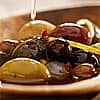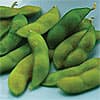
What's Hot
What's Hot
|
|
| News flashes are posted here frequently to keep you up-to-date with the latest advances in health care and longevity. We have an unparalleled track record of breaking stories about life extension advances.
Lycopene stops BPH in its tracks
Hans-Konrad Biesalski of the University of Hohenheim in Stuttgart and his German colleagues enrolled 40 men with biopsy-confirmed BPH and a serum prostate specific antigen (PSA) concentration of greater than 4.0 micrograms per liter. The men were randomized to receive 15 milligrams lycopene per day or a placebo for six months. Prostate specific antigen was measured in blood samples drawn during screening, and after one, three, and six months. Insulin-like growth factor, testosterone and other factors were measured during the first and last clinic visits. Prostate volume was determined via digital rectal examination and prostate weight by trans-rectal ultrasonography. After six months, men who received lycopene experienced a decrease in PSA levels, while those who received the placebo experienced no change. Prostate enlargement progressed in the placebo group and remained the same in those that received lycopene. Although both groups reported improved BPH symptoms following the trials, a greater effect was report by men who received lycopene. The research is the first controlled clinical study, to the authors knowledge, to report the effects of lycopene in men with benign prostatic hypertrophy. They suggest inhibition of 5-alpha reductase and interleukin-6 signaling as possible mechanisms for lycopene, and add that its antioxidant property may be involved in the prevention of oxidative stress mediated cell proliferation and remodeling in the prostate. —D Dye Cardiovascular death rates down
There were 869,724 deaths from cardiovascular disease in 2004, 553,88 deaths from cancer, and 150,074 from stroke when the condition was considered separately from cardiovascular disease. Coronary artery disease considered separately from other cardiovascular diseases, including hypertension and stroke was responsible for 451,326 deaths. The Update shows an increase in some cardiovascular disease risk factors despite the current decline in deaths. Two thirds of all U.S. adults are overweight, and nearly half of these are obese. Diabetes, which greatly increases cardiovascular disease risk, is also on the rise. “These statistics make it clear that cardiovascular disease remains, by far, our greatest public health challenge,” stated Donald Lloyd-Jones, MD, ScM, who is the chair of the Heart Association's Statistics Committee which is responsible for the Update. “Although we have made some substantial strides in understanding the causes of cardiovascular disease, the data in this publication show that we have a long way to go to capture people’s attention and to implement the prevention and treatment programs we need.” “This Update contains a wealth of information that is useful for researchers, the media, policymakers, clinicians and the general public alike,” he observed. “We hope it will raise awareness that cardiovascular disease, the leading cause of disability and death in the United States, is highly preventable and very treatable – if people make themselves aware of their risks and the potential approaches.” —D Dye Autophagy promotes longevity
Autophagy is a process by which cells dispose of damaged proteins and structures via autophagosomes. Suppression of autophagy results in the accumulation of protein aggregates that are a marker of neural degeneration. In previous research, autophagy increased when animals were given a low calorie diet. In the current study, Kim Finley, PhD, of Salk's Cellular Neurobiology Laboratory and colleagues found that the reduction of a protein called autophagy-related 8a (Atg8a), needed for autophagosome formation, resulted in the accumulation of damaged intracellular proteins and a decrease in the life expectancy of the fruit fly Drosophila. Conversely, it was demonstrated for the first time that promoting the pathway of Atg8a not only prevented protein aggregate accumulation by increasing autophagy, but extended average life span by 56 percent . “We discovered that levels of several key pathway members are reduced in Drosophila neural tissue as a normal part of aging which suggests there is an age-dependent suppression of autophagy that may be a contributing factor for human neurodegenerative disorders like Alzheimer’s disease,” Dr Finley explained. “The activation of autophagy facilitates the removal of damaged molecules that accumulate during cellular aging. This may be particularly important in the nervous system since neurons produce damaged molecules at a much higher rate than most cell types. They rely on autophagy together with other clearance and detoxification pathways to keep themselves healthy and functioning for decades." She concluded, “By maintaining the expression of a rate-limiting autophagy gene in the aging nervous system there is a dramatic extension of lifespan and resistance to age-associated oxidative stress.” —D Dye Mushroom shows potential as prostate cancer fighter
Research concerning the possible anticancer benefits of various fungi conducted over the past few decades has focused on their effect on immune function. In the current study, Dr Ben-Zion Zaidman, acting under the direction of Professors Eviatar Nevo and Solomon Wasser from the University of Haifa's Institute of Evolution, and Dr Jamal Mahajna from the Migal Galilee Technology Center, evaluated the ability of extracts from 68 fungi to act from within the cell to interfere with the androgen (male hormone) receptor, or inhibit cancer growth. The compounds from the fungi were extracted with solvents such as ether, ethyl acetate or ethanol that select molecules small enough to act from within the cells. "Up to now, research has been based on enhancing the immune system with high-molecular-weight polysaccharides that act through specific receptors in cell membranes," Dr Zaidman explained. "We concentrated our research on low-molecular-weight secondary metabolites that can penetrate the cells and act at the molecular level from within the cell itself." Out of 201 extracts, Dr Zaidman's research found 11 that interfered with androgen receptor activity (which controls prostate cancer growth) by more than 40 percent, and among the 169 extracts evaluated for cancer cell growth inhibition, 14 were discovered to be active. Of these active compounds, extracts derived from Ganoderma lucidum exerted the greatest interference on androgen receptor function and cancer cell development. "The results of this research are particularly interesting from a commercial aspect," Dr Zaidman stated. "Potential possibilities exist to establish research and development of bioactive metabolites from Ganoderma lucidum that could yield an anti-prostate cancer drug." —D Dye Letter to The Lancet rebuts reports linking folic acid to increased colorectal cancer risk
The first paper under consideration, published in the Journal of the American Medical Association, reported the results of a trial of folic acid for the prevention of colon adenomas, a benign precursor of colorectal cancer. The authors of the report concluded that one milligram per day folic acid did not reduce adenoma risk and that “further research is needed to investigate the possibility that folic acid supplementation might increase the risk of colorectal neoplasia.” The authors of The Lancet correspondence state that these conclusions have been misinterpreted, and that the report does not show that folic acid supplementation is hazardous. In this study, the amount of folic acid used did not decrease nor increase adenoma risk. Although a subset of participants with three or more adenomas experienced an increased risk, the small size of this group, and the fact that folic acid supplementation was not associated with an increase among those with one or two adenomas make it likely that this secondary finding is attributable to chance. In the second report, published in Cancer Epidemiology, Biomarkers & Prevention, Joel B. Mason and colleagues submit their hypothesis of an association between folic acid fortification in the U.S. and Canada and an increase in colorectal cancer. Bayston and colleagues observe that colorectal cancer incidence in the two countries declined until 1995 and then increased in 1996 with the onset of widespread endoscopic screening. Because large scale mandatory folic acid fortification was implemented in 1998 in the United States and in 1999 in Canada, it is not likely to be the cause of the increase that began in 1996, which may be due greater early detection. “The FSA and the Chief Medical Officer can be confident in recommending that the UK Government introduce the mandatory fortification of flour, which could prevent about 400 pregnancies affected by neural tube defects each year, reducing both the number of terminations of pregnancy and of children born with these defects,” they conclude. —D Dye Mediterranean diet, exercise reduce the risk of dying over a five year period
In the first study, Michael F. Leitzmann, MD, DrPH of the National Cancer Institute and his associates utilized the responses of two questionnaires concerning physical activity completed by 142,828 men and 110,097 women who participated in the National Institutes of Health-American Association of Retired Person's (NIH-AARP) Diet and Health Study. Over a five year period, 7,900 deaths occurred. The team found that participants who adhered to the national guideline of 30 minutes or more of moderate physical activity most days of the week had a 27 percent lower risk of dying over follow-up than inactive individuals. Even engaging in physical activity at less than the recommended guideline level was associated with a 19 percent lower risk compared with being inactive. For the study on diet, Panagiota N. Mitrou, PhD, who is currently at the University of Cambridge in England, and his colleagues also analyzed data from NIH-AARP Diet and Health Study. Using dietary questionnaire responses, they scored conformity to the Mediterranean diet for 214,284 men and 166,012 women. Dietary components evaluated consisted of vegetables, legumes, fruits, nuts, whole grains, fish, ratio of monounsaturated fats, alcohol and meat. There were 12,105 deaths over follow-up, including 3,451 from cardiovascular disease, and 5,985 from cancer. Higher Mediterranean diet scores were associated with a lower risk of dying from all causes as well as cancer and heart disease. While newer and advanced life extension therapies are currently being explored, the importance of diet and exercise continues to be confirmed in large studies such as these. Future studies will undoubtedly reveal further benefits associated with these two pillars of good health. —D Dye Broccoli sprouts help prevent bladder cancer
Dr Zhang and his colleagues at Roswell Park Cancer Institute in Buffalo, New York used a rat model of bladder cancer for the current study. By giving the animals varying doses of a freeze dried aqueous extract of broccoli sprouts, they found that incidence, multiplicity, size and progression of bladder cancer were significantly inhibited in a dose-dependent manner. They also observed an increase in the bladder of enzymes that protect against oxidants and cancer-causing agents. Broccoli sprouts contain cancer-preventing compounds known as isothiocyanates (ITCs) which are metabolized to dithiocarbamates (DTCs) in the body. By measuring isothiocyanate and dithiocarbamates in the rats' blood, tissue, and urine, the researchers found that over 70 percent of the broccoli sprout extract's isothiocyanates were excreted into the urine within 12 hours after a single dose, demonstrating high bioavailability. Urinary levels of ITCs were two to three times greater than plasma levels, which indicates that the bladder receives high exposure to the protective compounds. Bladder tissue levels of the compounds were also found to be elevated. “The bladder is like a storage bag, and cancers in the bladder occur almost entirely along the inner surface, the epithelium, that faces the urine, presumably because this tissue is assaulted all the time by noxious materials in the urine,” Dr Zhang explained. “The ITCs in broccoli sprout extracts after oral ingestion are selectively delivered to the bladder epithelium through urine excretion.” The study provides more evidence that compounds that are orally consumed have a direct effect on promoting or inhibiting the development of cancer in the bladder. —D Dye Green tea polyphenols inhibit colorectal tumors in rodent model
C.S. Yang, PhD, who is professor and chair of the Department of Chemical Biology at Rutgers, along with Dr Xiao and colleagues, treated rats with azoxymethane, a compound that stimulates colorectal tumors that share many characteristics of human colorectal cancer. The animals were provided with diets that were high in fat, resembling typical Western diets. Half of the rats were given a 0.24 percent solution of Polyphenon E, which contains the four major polyphenols in green tea and consists of 65 percent epigallocatechin gallate (EGCG), believed to be tea's most active polyphenol. After 34 weeks, animals that received green tea had 55 percent less tumors than rats that did not receive the compound and the tumors they had were 45 percent smaller. Additionally, microscopic examination of the tumors found fewer malignancies in the polyphenol group. These animals also weighed approximately 5 percent less than the control group, which the researchers attribute to tea polyphenols' ability to block fat absorption. “Our findings show that rats fed a diet containing Polyphenon E, a standardized green tea polyphenol preparation, are less than half as likely to develop colon cancer,” Dr Xiao stated. “When you account for caloric consumption, 0.24 percent Polyphenon E in diet gave the experimental rats the equivalent of about four to six cups of tea a day. While I can’t make any recommendations for how much green tea people should drink each day, it isn’t uncommon for some to drink that much tea.” —D Dye Soy isoflavone intake associated with lower stroke and heart attack risk in women
The current research included 40,462 men and women between the ages of 40 and 59 who participated in the Japan Public Health Center-Based Study. Subjects were free of cardiovascular disease and cancer upon enrollment between 1990 and 1992. Dietary questionnaires completed at the beginning of the study were analyzed by the investigators for soy and total isoflavone intake. Participants were followed through 2002, and fatal and nonfatal cases of stroke and heart attack documented. Over the 12.5 average follow-up, there were 587 cerebral infarctions (type of stroke) and 308 myocardial infarctions. Among women, soy intake greater than or equal to five times per week lowered the risk of stroke by 36 percent, heart attack by 45 percent , and cardiovascular disease mortality by 69 percent compared with risks experienced by those whose intake was two or fewer times per week. When isoflavone intake was examined, women whose intake was highest had a 65 percent lower stroke risk, a 63 percent reduction in the risk of heart attack, and cardiovascular mortality was reduced by 13 percent. Soy appeared to be particularly protective for postmenopausal women. No significant associations with soy were observed in men. The authors hypothesize that soy isoflavones, which have a structure similar to estrogens and bind to the estrogen receptor, may exert a greater benefit on postmenopausal women because their estrogen receptors are not occupied with plasma estradiol. "Our results suggest that the consumption of dietary isoflavones may be beneficial to postmenopausal women for the prevention of ischemic cardiovascular disease," they conclude. —D Dye Grape-seed could be the food preservative of the future
Synthetic preservatives currently in use provide their benefit by retarding fat oxidation; however, the phenolic compounds in grape-seed appear to be even more effective antioxidants. “We’ve known for years that certain natural compounds, including some herbs and spices, have powerful antioxidant activity," commented lead researcher and University of Illinois professor of food science, M. Susan Brewer. "Food scientists have been trying to isolate the flavoring parts of these spices from the components that have the functional effects we’re looking for." In the current study, Dr Brewer and graduate student Martha Rojas evaluated the efficacy oregano, rosemary, and two concentrations of grape-seed extract on cooked, reheated beef and pork stored at 4 degrees Celsius for eight days The meat samples were tested every other day for oxidative markers and sensory indicators of rancidity. “The higher concentration of grape-seed extract yielded better results than we see with synthetics, which is certainly not what you’d expect," Dr Brewer stated. "Synthetics, after all, have been engineered to maximize effectiveness, but sometimes Mother Nature comes up with a better product.” “I really think grape-seed extract is a viable, natural way to preserve meat quality in the precooked entrees that are so popular now,” she added. “And, when companies can use the word natural on a label, it’s attractive to consumers. It takes some of the guilt out of using a convenience food.” —D Dye |

 A report published in the January, 2007 issue of the
A report published in the January, 2007 issue of the  Although the American Heart Association's Heart Disease and Stroke Statistics – 2008 Update lists cardiovascular disease as the number one cause of death in the United States, the death rate for 2004, the most recent year for which statistics are available, has declined from 2003. The Update, which was published online on December 17, 2007 in the journal
Although the American Heart Association's Heart Disease and Stroke Statistics – 2008 Update lists cardiovascular disease as the number one cause of death in the United States, the death rate for 2004, the most recent year for which statistics are available, has declined from 2003. The Update, which was published online on December 17, 2007 in the journal  A report scheduled to be published in the February, 2008 issue of the journal
A report scheduled to be published in the February, 2008 issue of the journal  The fungus Ganoderma lucidum, commonly known as reishi, has been found to suppress mechanisms involved in
The fungus Ganoderma lucidum, commonly known as reishi, has been found to suppress mechanisms involved in  Following the lead of the United States and Canada, Britain’s Food Standards Agency (FSA) has recommended that flour be fortified with folic acid to help prevent the development of neural tube defects in unborn children. However, on October 17, 2007, it was announced that the FSA’s decision will be delayed while its Chief Medical Officer considers two recent reports which linked folic acid supplementation with an increased risk of colorectal cancer. In a letter published in the December 15, 2007 issue of
Following the lead of the United States and Canada, Britain’s Food Standards Agency (FSA) has recommended that flour be fortified with folic acid to help prevent the development of neural tube defects in unborn children. However, on October 17, 2007, it was announced that the FSA’s decision will be delayed while its Chief Medical Officer considers two recent reports which linked folic acid supplementation with an increased risk of colorectal cancer. In a letter published in the December 15, 2007 issue of  Remaining physically active and consuming a Mediterranean diet were separately related to a lower risk of dying over a five year period in two reports published in the December 10/24, 2007 issue of the
Remaining physically active and consuming a Mediterranean diet were separately related to a lower risk of dying over a five year period in two reports published in the December 10/24, 2007 issue of the  At the American Association for Cancer Research’s Sixth Annual International Conference on Frontiers in Cancer Prevention, held December 5-8, 2007 in Philadelphia, Yuesheng Zhang, MD, PhD, announced the finding that broccoli sprouts appear to have a direct role in bladder cancer protection.
At the American Association for Cancer Research’s Sixth Annual International Conference on Frontiers in Cancer Prevention, held December 5-8, 2007 in Philadelphia, Yuesheng Zhang, MD, PhD, announced the finding that broccoli sprouts appear to have a direct role in bladder cancer protection. On December 6, 2007, at the American Association for Cancer Research’s Sixth Annual International Conference on Frontiers in Cancer Prevention Research, Hang Xiao, PhD of Rutgers University presented the results of research which demonstrated that administration of green tea polyphenols helped prevent the development of tumors in a rat model of
On December 6, 2007, at the American Association for Cancer Research’s Sixth Annual International Conference on Frontiers in Cancer Prevention Research, Hang Xiao, PhD of Rutgers University presented the results of research which demonstrated that administration of green tea polyphenols helped prevent the development of tumors in a rat model of  The November 27, 2007 issue of the journal
The November 27, 2007 issue of the journal  Grape-seed extract revealed an excellent ability to preserve meat in a recent study conducted at the University of Illinois, and may prove to be a viable alternative to synthetic preservatives. With the increased availability of ready-to-eat products, the discovery could be a boon for both the food industry and consumers. The finding was published in the May, 2007 issue of the
Grape-seed extract revealed an excellent ability to preserve meat in a recent study conducted at the University of Illinois, and may prove to be a viable alternative to synthetic preservatives. With the increased availability of ready-to-eat products, the discovery could be a boon for both the food industry and consumers. The finding was published in the May, 2007 issue of the 